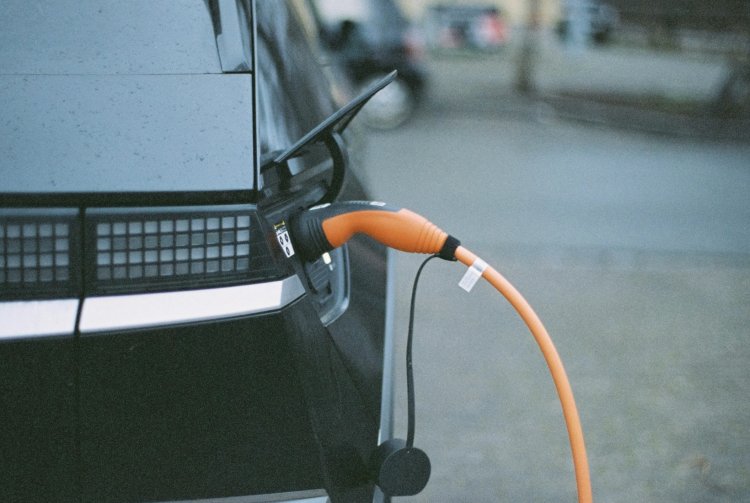11-06-2024
Pauliina Majasaari
East Asia Team Researcher
Global Human Rights Defence
Nepal has been increasing its production of hydroelectric power, which in turn has cut the costs of oil imports into the country, cleaning up its air and thereby working towards its national climate goals to curb climate change. A major factor is the boom of sales in electric vehicles (EVs) and amping up of charging stations, which has made the use of electric vehicles much more accessible in the country.
The reduction of greenhouse gas emissions has become a focal point in addressing the severe impacts of climate change and slowing down global warming, and thereby transitioning from fossil fuels to renewable-energy is at the forefront of change. The role of transportation in mitigating the impacts of climate change is vast, as more than one third of the greenhouse gas emissions come from the transport sector, and thereby transferring use from conventional vehicles to EVs can have a major impact on the protection of the environment, such as reducing air pollution, reducing greenhouse gas emissions and ensuring energy security and diversity. Within Nepal’s Nationally Determined Contributions (NDCs) in 2016, it had set targets on increasing the use of EVs to 20 percent of all passenger vehicles by 2020, however Nepal was able to achieve an estimate of 1 percent of the total number of vehicles being electric, thereby gravely underscoring its targets. Respective targets of short term, by 2025, is the use of EVs for private passenger vehicles has been set to 25 percent and for long-term, by 2030, Nepal has respectively set the target to 90 percent. However a study conducted on Nepal’s ability to meet the first NDCs targets has shown its ineffective engagement with pertinent stakeholders, lack of need-based research for the formulation of the targets and proper implementation of policies, programs and budgets to achieve the targets it has set on the use of EVs.
The legally binding international treaty on climate change, the Paris Agreement, under Article 4 sets obligations on nations to create NDCs which are used to reduce national emissions and adapt to the impacts of climate change. The climate actions taken through the NDCs determine whether the nations globally can reach the long term goals at set within the Paris Agreement and to reach the peak of greenhouse gas emissions as soon as possible, however bearing in mind that the peaking in developing countries will take longer taking into account needs for sustainable development and to reduce and eliminate poverty. As mentioned Nepal has been setting targets on the use of EVs in order to mitigate the impacts of climate change and thereby contributing to the goals and aims of the Paris Agreement. The sale and import of electric vehicles have increased on a major level within the past few years as Nepal has been investing in hydroelectric projects, thereby ensuring access to electricity for all. At the moment the electricity grid, made up of mostly clean energy reaches all but 6 percent of the population in Nepal. However, the effectiveness of the measures and of the infrastructure in Nepal have been criticised to be insufficient to achieve the NDCs on the use of EVs. As such the criticism focuses on the lack of acquiring foreign and private investment for the creation of the energy infrastructure, bureaucracy issues as well as environmental and social considerations. However, even though barriers are still present in fully realising Nepal’s NDCs targets in relation to use of EVs, Nepal has been taking important steps within its capabilities to meet the goals set for abiding by Article 4 of the Paris Agreement.
Consequently, Nepal is urged and supported by the Asian Development Bank to keep developing the hydroelectric power projects and plants to ensure all of its people have access to the electricity grids, especially those living in the rural areas and thereby work towards clean energy transition. In addition, Nepal is urged by various regional and national actors, to keep building on clean transport systems and adding on the already existing charging stations, to be able to increase the use and access to EVs for everyone in Nepal.
Sources and further readings:
Allyson Krupa, ‘Barriers and Opportunities to Electric Vehicle Development in Nepal” Independent Study Project (2019)4 Collection 3279 <https://digitalcollections.sit.edu/isp_collection/3279> accessed 11 June 2024.
Amit Pokhrel, ‘Sustainable Alternative: Importance of electric Vehicles (EV) in Nepal’ Urja Khabar (8 October 2023) <https://www.urjakhabar.com/en/news/0810718438> accessed 11 June 2024.
Binaj Gurubacharya, ‘EV sales boom in Nepal, helping to save on oil imports and alleviate smog’ AP News (6 June 2024) <https://apnews.com/article/nepal-ev-energy-hydropower-241d486f228051c73ff2793e043b0cca> accessed 11 June 2024.
Charging Nepal’s Electric Future’ Asian Development Bank (6 September 2023) <https://www.adb.org/news/videos/charging-nepals-electric-future> accessed 11 June 2024.
Nationally Determined Contributions (NDCs)’ United Nations Climate Change <https://unfccc.int/process-and-meetings/the-paris-agreement/nationally-determined-contributions-ndcs> accessed 11 June 2024.
Paris Agreement (adopted 12 December 2015, entered into force 4 November 2015 ) 3156 UNTS 7.
Sukeerti Shrestha, ‘Can Nepal Achieve its 2030 Electric Vehicle Targets?’ Nepal Economic Forum (17 July 2023) <https://nepaleconomicforum.org/can-nepal-achieve-its-2030-electric-vehicle-targets/> accessed 11 June 2024.







Comments